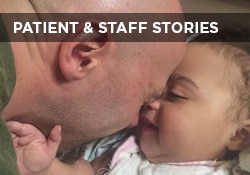This website uses cookies so that we can provide you with the best user experience possible. Cookie information is stored in your browser and performs functions such as recognising you when you return to our website and helping our team to understand which sections of the website you find most interesting and useful.

Susan E. Mazer, Ph.D. Blog
Thoughts and ideas on healthcare
Hi, and welcome to my blog! I'm Susan E. Mazer -- a knowledge expert and thought leader on how the environment of care impacts the patient experience. Topics I write about include safety, satisfaction, hospital noise, nursing, care at the bedside, and much more.
Moving to Person-Directed Care
December 15, 2017
 With his permission, I am sharing an excerpt from blog post written by a dear friend, George Drake, that speaks to the issue of person-directed care in residential care facilities.
With his permission, I am sharing an excerpt from blog post written by a dear friend, George Drake, that speaks to the issue of person-directed care in residential care facilities.
When my husband Dallas Smith and I met George in the late 1980s, he was teaching math at Lake Tahoe Community College. And, he was also a political activist. An avid bike rider.
George was also directing a non-profit organization that he founded, Common Sense, which focused on environmental health and all that goes with it. At that time, the environment wasn’t a top priority for very many people.
A Life-Altering Event
Then, George was diagnosed with multiple sclerosis (MS). That was about 25 years ago. He has since retired from teaching and Common Sense has ceased to exist.
The progression of his MS now requires that George live in a skilled nursing facility where can receive the 24-hour care he needs. He is unable to take care of himself, he cannot sit up on his own or move his legs.
In fact, he can barely hold a fork or spoon. However, George writes a blog, In the Service of Gaia, and is as sharp as ever.
Those who care for him do not know him and may never come to know him. In his very articulate and straightforward style, George wrote about something that happened to him in the nursing facility. (The name of the caregiver has been changed for the sake of privacy.)
George’s Post
One of the things about caregivers that gets my goat is the pretty common experience of getting one who wants to finish your every utterance for you.
As I’ve gotten older this has become an increasing problem. I’ve gotten soft spoken and my speech has slowed down a great deal. And, when I try to speak, what I say virtually never comes close to my intent.
A classic example occurred recently when Mary Beth, one of my least favorite caregivers, asked me whether there was anything else I needed help with before she left.
Now, one of the traits that Mary Beth displays, and one of those that most annoys me, is that she wants to exit the room the instant she enters it. Her request was really aimed at exiting, not soliciting more work.
She has often left the room before I could respond to such comments: It feels like, “Jump now!”, or it will be too late.
Anyway, my first response has become, in time, a tactic that I essentially use to try to stall until I can come up with the right words. Actually, I try to give her something to do until I really can ask for what I need. In this case, she asked me if there was anything she could do for me.
My response was that she could help me with the belt I place around my knees to prevent my right knee from being injured from being jammed into walls by my power chair. Somehow this resulted in my saying something like “watch me try to put my belt on my knees.”
This was meant to be the start of a sentence that ended with “so you can judge for yourself whether I need help doing it.” She jumped in before I could finish. “You mean that by watching you do it I have helped you?”
George goes on to write that he felt like his aide believed he was lazy, a “slacker.”
Think about it. George is wheelchair bound, unable to care for himself — and the person helping him communicates verbally and non-verbally, that she has little if any, respect for him.
But George was a math professor and political activist. He’s no dummy.
The Movement to Person-Directed Care
However, in this skilled nursing facility, where George cannot finish his own sentences, cannot care for himself, and where those who care for him see him as an object of their work, he has no identity.
How many other elderly residents in facilities like this are unable to talk and whose long life prior to their hospitalization is invisible? Their sense of self may be all they have to hang on to.
The good news is that there’s a national organization that is working to promote the idea of person-directed care for elders. The Pioneer Network is a nonprofit organization founded in 1997 that is a national leader of a culture change movement to help care providers transition away from a medical, institutional model of elder care to one that is life-affirming, satisfying, humane, and meaningful.
What is the Difference?
For example, in a traditional care culture like the facility George is in, residents frequently have different care staff. The staff members do not know the residents well, so they are not familiar with their preferences. Residents often feel unknown, insecure, or scared.
But in a person-directed care culture, the same staff members take care of the same resident; they know each other and good relationships develop. This motivates staff members to provide better quality care. Residents feel more secure, content, and happy.
The design of the physical environment can also support person-directed care. Think of a resident room that is dark, neutral, and institutional versus one that has natural light, color, and is more residential.
According to the Kaiser Family Foundation, there are more than 15,000 nursing facilities in America. So, despite the Pioneer Network’s ongoing work in this area, there’s so much more to be done.
P.S. If you like this post, please do me a favor and share on LinkedIn, Twitter, Facebook, etc. Also to get automatic notices when a new post is published, please subscribe. No spam – just great content. Thanks!










